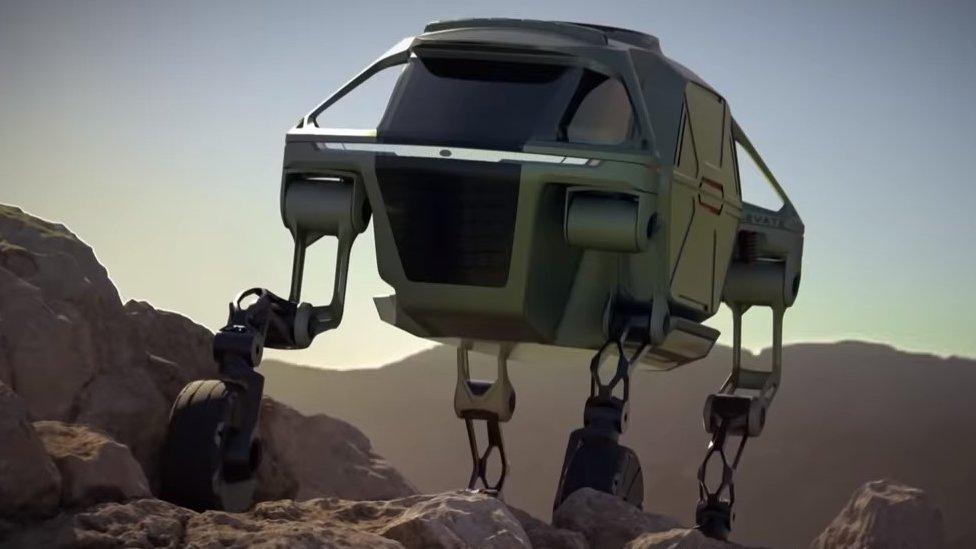Hyundai shows off 'walking car' at CES
- Published

Hyundai has shown off a small model of a car it says can activate robotic legs to walk at 3mph (5km/h) over rough terrain.
Also able to climb a 5ft (1.5m) wall and jump a 5ft gap, the Hyundai Elevate could be useful for emergency rescues following natural disasters, it said.
It was part of a project exploring "beyond the range of wheels", it added.
The concept has been in development for three years and was unveiled at the CES technology fair in Las Vegas.
"When a tsunami or earthquake hits, current rescue vehicles can only deliver first responders to the edge of the debris field. They have to go the rest of the way by foot," said Hyundai vice-president John Suh.
"Elevate can drive to the scene and climb right over flood debris or crumbled concrete."
Mr Suh also suggested that wheelchair users could be collected via the vehicles, which could "walk" up to the front door of a building with step-only access.
Allow YouTube content?
This article contains content provided by Google YouTube. We ask for your permission before anything is loaded, as they may be using cookies and other technologies. You may want to read and before accepting. To view this content choose ÔÇÿaccept and continueÔÇÖ.
Prof David Bailey, from Aston Business School, said: "Often car companies bring out lots of concepts which may or may not make it into production but it's great to think in new ways about mobility.
"For most of us, it's going to be wheels and roads but in extreme situations there may be scope for this sort of thing.
"There may well be applications in terms of emergency services - but there are very big technological challenges to make this sort of thing."
- Published26 September 2017
- Published30 August 2018
- Published6 January 2019